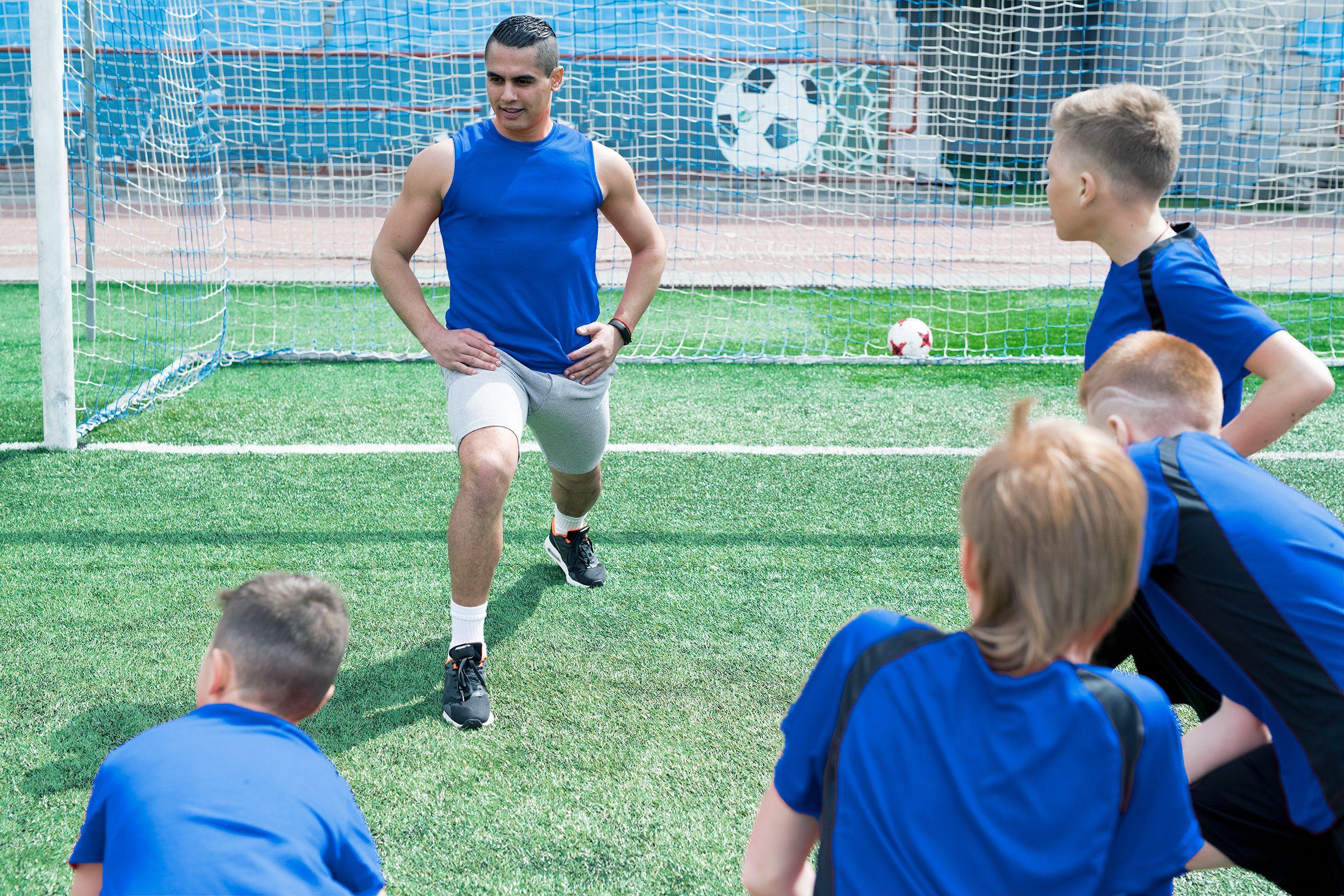
Physical Education - Teacher Education |
Bachelor of Science (B.S.) |
Physical Education – Teacher Certification (PETC) students are trained to teach physical education (K-12) in the public schools of South Carolina, and beyond. Students in the program will acquire over 200+ hours working in the elementary, middle and high schools, including the opportunity to work with students with special needs. This curriculum is designed so that, upon completion of clinical practice, teacher candidates will have met the licensure requirements of the state of South Carolina Throughout their time at Limestone, students will be exposed to teaching at various schools in the Gaffney and Spartanburg areas, including Blacksburg Middle School, Blacksburg High School, Gaffney Middle School, Gaffney High School and the South Carolina School for the Deaf and the Blind (Spartanburg, SC).
Limestone’s Physical Education Teacher Certification program is recognized by the Council for Accreditation of Educator Preparation, the National Association of Sport and Physical Education, and the state of South Carolina. The Physical Education Teacher Education major trains students to become physical educators consistent with appropriate guidelines provided by the Society of Health and Physical Educators (SHAPE) America National Standards and the Department of Teacher Education.
Related Occupations
Graduates of this program are qualified and are prepared to begin a teaching career (eligible for licensure by the state of South Carolina (SC) as a K-12 Physical Education teacher), have opportunities to coach, and/or work in other areas that have a focus in physical activity. Students are also prepared to enter graduate school to further their education.
Shape America Guidelines
Standard 1: Content and Foundational Knowledge Describe and apply common content knowledge for teaching PreK-12 physical education. Describe and apply specialized content knowledge for teaching PreK-12 physical education. Describe and apply physiological and biomechanical concepts related to skillful movement, physical activity and fitness for PreK-12 students. Describe and apply motor learning and behavior-change/psychological principles related to skillful movement, physical activity and fitness for PreK-12 students. Describe and apply motor development theory and principles related to fundamental motor skills, skillful movement, physical activity and fitness for PreK-12 students. Describe the historical, philosophical and social perspectives of physical education issues and legislation.
Standard 2: Skillfulness and Health-Related Fitness Demonstrate competency in all fundamental motor skills, as well as skillful performance in a minimum of four physical education content areas (e.g., games and sports, aquatics, dance and, rhythmic activities, fitness activities, outdoor pursuits, individual-performance activities). Attain and maintain a health-enhancing level of fitness throughout the program.
Standard 3: Planning and Implementation Plan and implement appropriate (e.g., measurable, developmentally appropriate, performance-based) short-and-long-term plan objectives that are aligned with local, state and/or national standards. Plan and implement progressive and sequential content that aligns with short-and-long-term plan objectives and that addresses the diverse needs of all students. Plan for and manage resources to provide active, fair and equitable learning experiences. Plan and implement individualized instruction for diverse student needs, adding specific accommodations and/or modifications for all students. Plan and implement learning experiences that require students to use technology appropriately in meeting one or more short-and-long-term plan objective(s). Plan and implement learning experiences that engage students in using metacognitive strategies appropriately to analyze their own performance results.
Standard 4: Instructional Delivery and Management Demonstrate verbal and nonverbal communication skills that convey respect and sensitivity across all learning experiences. Implement demonstrations, explanations and instructional cues that are aligned with short-and-long-term plan objectives. Evaluate the changing dynamics of the learning environment and adjust instructional tasks as needed to further student progress. Implement transitions, routines and positive behavior management to create and maintain a safe, supportive and engaging learning environment. Analyze motor skills and performance concepts in order to provide specific, congruent feedback that enhances student learning.
Standard 5: Assessment of Student Learning Select or create authentic, formal assessments that measure student attainment of short-and-long-term objectives. Implement formative assessments that monitor student learning before and throughout the long-term plan, as well as summative assessments that evaluate student learning upon completion of the long-term plan. Implement a reflective cycle to guide decision making specific to candidate performance, student learning, and short- and –long-term plan objectives.
Standard 6: Professional Responsibility Engage in behavior that reflects professional ethics and culturally competent, practices. Engage in continued professional growth and collaboration in schools and/or professional organizations. Describe strategies for the promotion and advocacy of physical education and expanded physical activity opportunities. SHAPE America (2017). National standards & guidelines for physical education teacher education (4th ed.) Reston, VA: Author Please refer to the Teacher Education Program information page for information surrounding its goals and application processes.
Fast Facts
- In order to teach Physical Education in the public schools of South Carolina, one must be certified to teach.
- Limestone University has a fully accredited Teacher Certification Program in Physical Education. This certification can be transferred to most other states.
- People who work in physical education programs have the opportunity to do their work in a variety of settings and in active and positive environments. They tend to be healthy and happy!
Explore Experiental Major Map
 Use this map to help plan and guide your experience at Limestone. Each student’s experience is unique so please keep in mind the activities outlined in this map are suggestions and can be tailored to you! Always consult with your advisors whenever possible for new opportunities and updates.
Use this map to help plan and guide your experience at Limestone. Each student’s experience is unique so please keep in mind the activities outlined in this map are suggestions and can be tailored to you! Always consult with your advisors whenever possible for new opportunities and updates.
Course Requirements
Requirement Notes
- Limestone's required Competency & General Education courses
- A total of 120 credit hours
- The required courses listed below (82 credit hours)
- Additional Biology course from BI101 or 110 (4 credit hours)
* This major includes one AWE course (3 credit hours)
Note: required physical activity classes are included in the required courses.
Note: All physical education teacher candidates must demonstrate competencies in a variety of activities and maintain an appropriate fitness level. As such, each physical education teacher candidate must receive a grade of B or better in Net Sports, Field/Court I, Field/Court II, and the three required physical activity classes. All physical education teacher candidates will be tested for his/her fitness level using FITNESSGRAM®, or other appropriate standardized fitness testing programs, during first entry into the physical education teacher education program and retested during his or her final year. If a student needs an accommodation to achieve the course requirements, an interaction process, including the student, will be engaged to determine appropriate accommodations.




